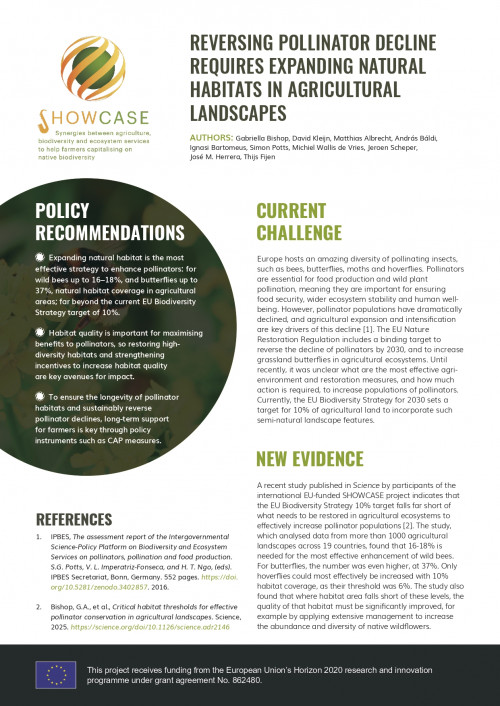A new SHOWCASE policy brief highlights that reversing the alarming decline of pollinators in Europe will require expanding natural habitats well beyond current EU targets. The brief, authored by partners Wageningen University, Agroscope, HUN-REN Centre for Ecological Research, CSIC, University of Reading, Dutch Butterfly Conservation and University of Evora, draws on findings recently published in a publication in Science.
The study analysed over 1,000 agricultural landscapes across 19 countries and found that while the EU Biodiversity Strategy for 2030 calls for 10% of agricultural land to feature semi-natural habitats, this is not enough to restore pollinator populations. To effectively enhance pollinator numbers, wild bees require 16–18% natural habitat coverage, and butterflies up to 37% — far exceeding current EU goals.
The brief recommends three key policy actions:
- Expand natural habitat in farmland beyond current EU targets.
- Improve habitat quality by restoring high-diversity areas and incentivising farmers to maintain them.
- Ensure long-term support for farmers through policies like the Common Agricultural Policy (CAP) to make pollinator-friendly practices sustainable.
Pollinators such as bees, butterflies, moths and hoverflies are critical for food production, ecosystem health and human well-being, yet their populations continue to decline due to agricultural intensification and habitat loss. This new evidence provides a strong scientific basis for strengthening EU restoration policies, particularly under the EU Nature Restoration Regulation, which aims to reverse pollinator declines by 2030.
Read the full brief here.
